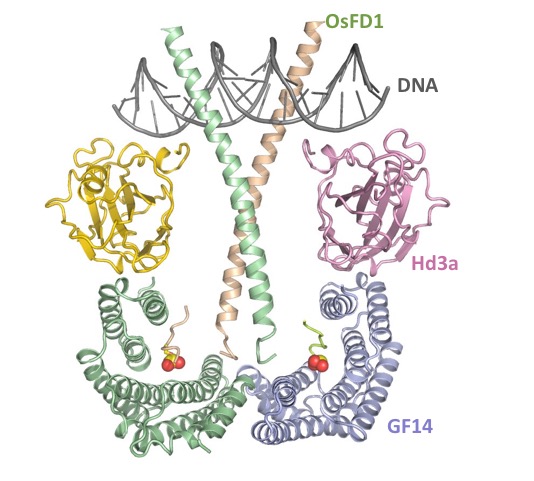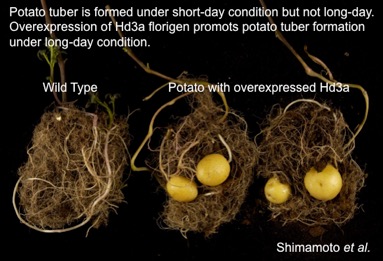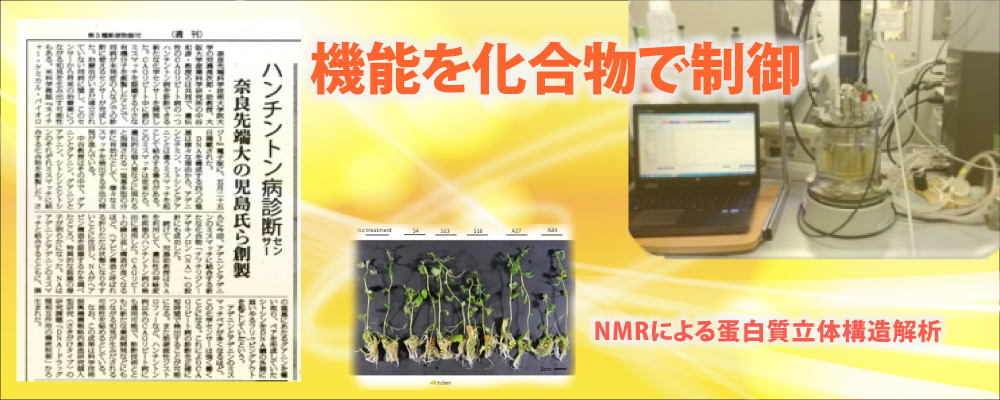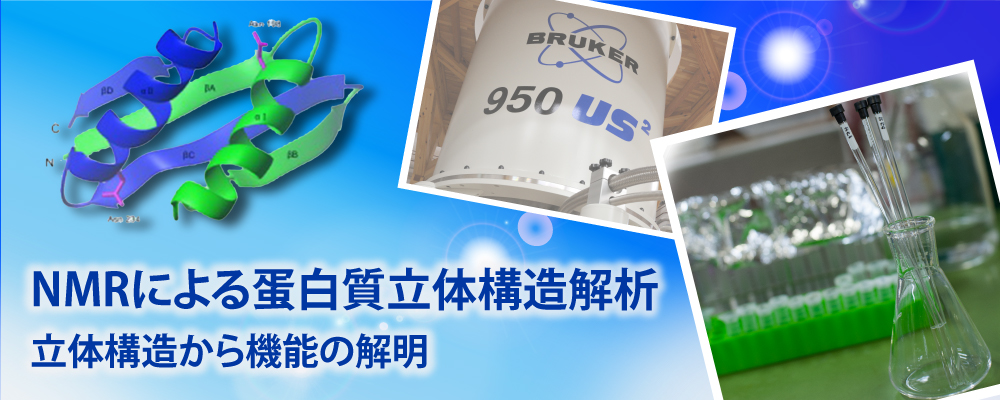立体構造 / 3D structure
蛋白質は立体構造を持つ
蛋白質など生体高分子は密にパッキングされており、水素結合や立体障害によって特定のコンフォメーション(立体構造)だけが選択的に安定化されています。NMR法では水素核間距離や二面角情報を用いたコンフォメーション解析によって、この立体構造を生理条件下で決定しています。また、細胞内で蛋白質の立体構造を決定することが可能なのはNMRだけです。そこで我々は生命活動を担う重要な蛋白質や核酸の立体構造を決定するとともに、細胞内での立体構造解析法も開発しています。
3D structure of proteins and nucleic acids is a most stable and compact conformation stabilized by hydrogen-bond and hydrophobic interaction. NMR can determine solution structure by local conformational analysis using inter-proton distances and dihedral angles, even in the living cell. We aim at the structure determination of proteins and nucleic acids, and developing the method to determine the structure in the living cell.
機能 / Biological function
立体構造から機能がわかる
NMRは立体構造情報を生命現象(分子機能や生理機能)に結びつけることが可能です。我々は花咲かホルモンの立体構造情報をその受容体の発見や人工的な開花に結びつけるなど、機能構造の解明を進めています。
Biological function can be revealed by NMR structural study. Our NMR study of flowering hormone leads the discovery of its receptor and the time of bloom control. We aim at functional analysis based on NMR structural study.

花咲かホルモン受容体の発見
Taoka et al., Nature, 2011



化合物 / Chemical reagent
機能を化合物で制御する
立体構造や機能の解明によって生命現象を制御する低分子化合物のデザインが可能になります。我々はNMRや計算機を用いたスクリーニングや論理的デザインで医薬品や人工花咲かホルモンなどの薬剤を開発しています。
Chemical reagent regulating biological function can be designed by understanding structure and function. We are developing the chemicals for medical and agricultural applications by screening and rational drug design using NMR and computer.



.jpg)




